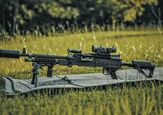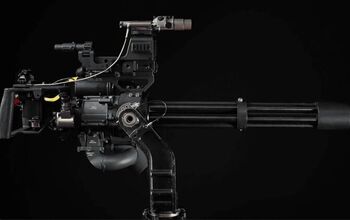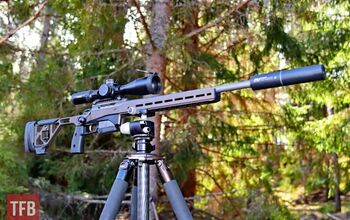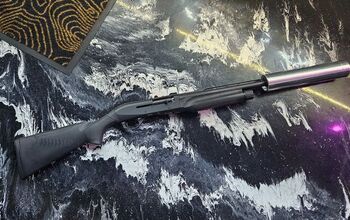SAW Program: The XM106 Automatic Rifle

As the army adopts new weapons, I am curious about other systems that have been proposed and tested in the past, which led me to the XM106. The U.S. Army's experience revealed significant shortcomings in the infantry squad’s firepower during the Vietnam War. The challenges encountered in Vietnam prompted a reevaluation of infantry small arms, resulting in various studies and programs to enhance infantry lethality.
The combat experiences of soldiers during this period were crucial in reassessing existing weapons and formulating new requirements for small arms, including an investigation into light machine guns (LMG) for infantry use. This initiative led to the launch of the Squad Automatic Weapon (SAW) program in the late 1970s. The XM106 was the only government-designed and sponsored candidate in the SAW competition and was a more cost-effective proposal resembling a DIY project. It was also the only magazine-only contender.
In the original SAW program in the early 1970s, the U.S. Army requested a new SAW / LMG. During the evaluation of potential calibers for this new system, it was determined that the 5.56x45 caliber lacked effective range and terminal performance, while the 7.62x51 caliber was considered too heavy; they desired to bridge the gap between the two. Weapon developers and military users concluded that no existing weapon systems and calibers could meet their requirements, leading to the need for a new compromise caliber: the 6x45 SAW. This cartridge used a 105-grain low-drag bullet fired at approximately 2,450 feet per second (747 m/s).
In 1976, the Army decided to redirect the SAW program. This decision included halting the development of the 6mm SAW cartridge and shifting the focus to 5.56x45 LMG designs. The motivation behind the 5.56 SAW program, besides developing a weapon, was to enhance the effectiveness of the 5.56x45 cartridge. During the 1960s and 1970s, the standard cartridge was the 5.56x45, 55-grain. However, attempts to improve the 5.56x45 performance led to the development of various 5.56 cartridges, such as the XM777, XM778, XM287, and XM288. Ultimately, this culminated in the 1980 decision to adopt the 5.56x45 M249 and the 62-grain SS109 as the modified US M855.
The XM106 was developed by the United States Army's Ballistic Research Laboratory at Aberdeen Proving Ground in collaboration with Colt. This design featured a heavily modified M16A1 to improve sustained fire capabilities. It also was the least promising or ambitious rifle submitted to the SAW program. But it was the lightest weight at 10.5 lbs (4.8 kg).
The SAW program had three additional contenders: the Ford Aerospace XM248, the Belgian FN XM249, and the German Heckler & Koch HK21A1, known as the XM262. These weapons offered enhanced light machine gun capabilities and featured belt-fed designs.
The XM106 was developed in 1978 at the U.S. Army's Ballistics Research Laboratory by Timothy Brosseau, who previously created the open-bolt M231 Firing Port Weapon for the Bradley Fighting Vehicle program. The XM106 is an open-bolt, magazine-fed modification of the M16A1, functioning as an automatic rifle rather than a light machine gun. It includes a quick-change barrel system, a forward vertical grip, and operates from an open bolt. The standard buffer of the M16A1 was replaced with a new one, which reduced the weapon rate of fire to 750 rounds per minute.
The handguard was divided into two sections to enable a quick-change barrel system. The bipod is attached to the non-removable portion connected to the receiver, a design improvement learned from the M60. Changing the barrel involves disengaging the locking mechanism on the delta ring, which allows the barrel to be easily removed and replaced. The forward section of the handguard serves as a handle for removing the barrel. The barrel itself includes a gas block and a gas tube. However, the most vulnerable part of the barrel assembly is the gas tube, which hangs freely and is exposed in the field, making it susceptible to bending, breaking, or debris ingress. Another notable feature of the barrel assembly in the front sight block was its relocation closer to the muzzle, which increased the sight radius. As with any system featuring a quick-change barrel, slop is introduced, resulting in increased dispersion and a shift in point of impact. This is a trade-off to provide the volume of fire the infantry needs.
The XM106 was designed to use clipped-together magazines, giving the operator three 30-round magazines. This would have provided inadequate firepower, so Timothy Brosseau developed an 83-round magazine, patent number US 4138923A. This was an improvement over slapping three 30-round magazines together.
The XM106 was the first weapon dropped from the SAW program primarily due to its technical limitations, inefficient feeding system, and vulnerability issues in field conditions, despite its domestic origin. The result of the SAW program was that the FN XM249 was shown to meet the Army's requirements the best and was officially adopted in 1982.
The XM106 was never adopted but may have influenced other weapons based on the AR design. The weapon possessed some attributes of a light machine gun, but its limitations were primarily due to its feed system, which relied solely on magazine feed. This limited its suppressive fire capability, but it would have been a cost-effective option using the same AR-pattern weapon utilizing most existing production lines.
Sources:
- https://www.army.mil/article/169197/National_Infantry_Association_honors_Army_researcher
- https://babel.hathitrust.org/cgi/pt?id=mdp.39015084386617&view=1up&seq=72&size=200
- https://youtu.be/0ON5sSwprQU?si=sTgScQzHqfVjMX9i
- https://apps.dtic.mil/sti/citations/ADB000980
- https://apps.dtic.mil/sti/tr/pdf/ADB000855.pdf

Lynndon Schooler is an open-source weapons intelligence professional with a background as an infantryman in the US Army. His experience includes working as a gunsmith and production manager in firearm manufacturing, as well as serving as an armorer, consultant, and instructor in nonstandard weapons. His articles have been published in Small Arms Review and the Small Arms Defence Journal. https://www.instagram.com/lynndons
More by Lynndon Schooler




























Comments
Join the conversation
Now USMC is replacing M249s with mag fed HK M27. New thing is the piston action but other than that the progress in SAW matters over the last 47 years has been neglible.